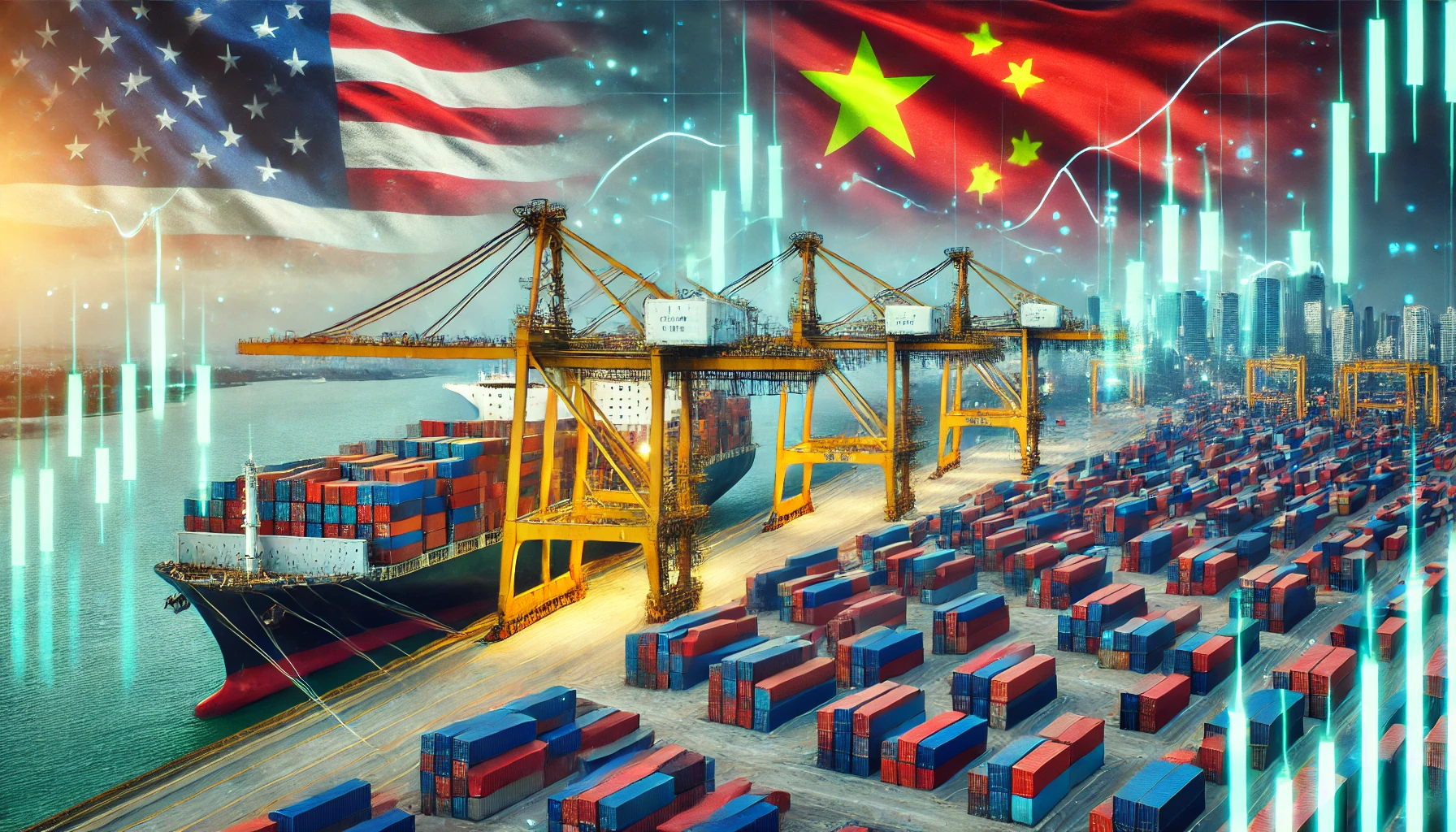Physical Address
304 North Cardinal St.
Dorchester Center, MA 02124
Physical Address
304 North Cardinal St.
Dorchester Center, MA 02124

Stay updated on the latest U.S.-China tariffs in 2025, with President Trump raising tariffs on Chinese imports to 20% and China retaliating with 10%-15% tariffs on U.S. agricultural goods. Learn how the escalating U.S.-China trade war is impacting global markets, U.S. inflation, and supply chains. Get expert analysis on WTO complaints, U.S. farming losses, China’s trade strategy with Europe, and consumer price increases on electronics and food.
The United States and China remain locked in a renewed trade war as of March 4, 2025, with President Donald Trump’s latest tariff increases triggering retaliatory measures from Beijing. The new U.S. tariffs, which doubled from 10% to 20%, are now impacting a broader range of Chinese imports, including consumer electronics, machinery, and textiles.
In response, China has imposed additional tariffs ranging from 10% to 15% on U.S. agricultural and food products, totaling $21 billion in exports. This includes a 15% tariff on U.S. chicken, wheat, corn, and cotton, as well as a 10% duty on soybeans, pork, and beef.
These escalating trade tensions have far-reaching consequences, affecting global markets, inflation rates, supply chains, and consumer prices. Below, we analyze the key developments, economic impact, and the future of U.S.-China trade relations.
| Date | Event |
|---|---|
| February 2025 | U.S. imposes 10% tariffs on Chinese goods. |
| March 4, 2025 | U.S. doubles tariffs to 20% on select imports. |
| March 4, 2025 | China retaliates with new tariffs (10%-15% on U.S. agriculture). |
| March 10, 2025 | China implements export and investment restrictions on 25 U.S. firms. |
| March 15, 2025 | WTO receives China’s formal complaint regarding U.S. tariff policy. |
| March 2025 (Ongoing) | Global markets react with volatility, as investors weigh risks. |
President Trump’s latest move includes a 20% tariff on key Chinese imports, specifically:
This builds upon previous tariff rounds dating back to 2018, when Trump first imposed duties on China under Section 301 of the Trade Act of 1974.
China’s Ministry of Commerce responded with tariffs on U.S. agricultural exports, affecting:
These measures primarily impact Midwest farmers, already burdened by prior trade disputes.
The latest tariff increases are expected to drive up costs for American consumers and businesses, particularly in electronics and essential goods.
Retailers like Best Buy and Walmart will pass on higher costs to consumers, with smartphones, laptops, and gaming consoles facing price increases of 10%-20%.
With China targeting agricultural exports, U.S. farmers face:
Many analysts fear a repeat of the 2018-2019 trade war, when China shifted to South American suppliers for key imports.
China has filed a formal complaint with the World Trade Organization (WTO), arguing that the new U.S. tariffs violate international trade laws. Beijing claims that:
While the WTO could rule against the U.S., enforcement remains a challenge, given Trump’s past defiance of WTO decisions.
✅ Rising tariffs on both sides
✅ China restricting U.S. business operations
✅ WTO dispute escalations
✅ U.S. businesses lobbying for exemptions
🔹 China’s tariffs remain lower than U.S. levels (10%-15% vs. 20%)
🔹 Trade talks are still ongoing
🔹 China avoided targeting major U.S. brands
While a full-scale trade war isn’t inevitable, tensions remain high.
Financial markets reacted negatively to the tariff announcements, with:
Supply chain disruptions and inflation concerns further fuel market volatility.
Economists warn that tariffs will contribute to higher U.S. inflation, particularly in:
Higher costs may lead to interest rate adjustments by the Federal Reserve.
To counter U.S. pressure, China is seeking closer trade relations with Europe, particularly in:
Beijing aims to diversify its global trade to reduce dependence on the U.S..
✔ U.S. tariffs on China have risen to 20%
✔ China retaliated with 10%-15% tariffs on U.S. agriculture
✔ WTO disputes and trade talks are ongoing
✔ U.S. businesses and farmers face economic strain
✔ China is pivoting towards European trade partnerships
The future of U.S.-China trade remains uncertain, but ongoing negotiations will determine whether tensions escalate or ease.
As of March 4, 2025, the U.S. has imposed a 20% tariff on Chinese goods, while China has retaliated with 10%-15% tariffs on U.S. agriculture.
Higher tariffs lead to increased prices on electronics, clothing, and food, impacting American consumers and businesses.
While talks are ongoing, no resolution is currently in sight.
The 2025 U.S.-China tariff escalation marks a critical moment in global trade policy. With economic consequences mounting, both nations must navigate delicate negotiations to avoid further disruptions to markets, inflation, and supply chains.
For the latest news, bookmark this page and follow updates on U.S.-China trade policy.
[…] insights into Trump’s broader economic policies, check out our in-depth coverage of the U.S.-China trade war and Trump’s March 4, 2025, policy […]